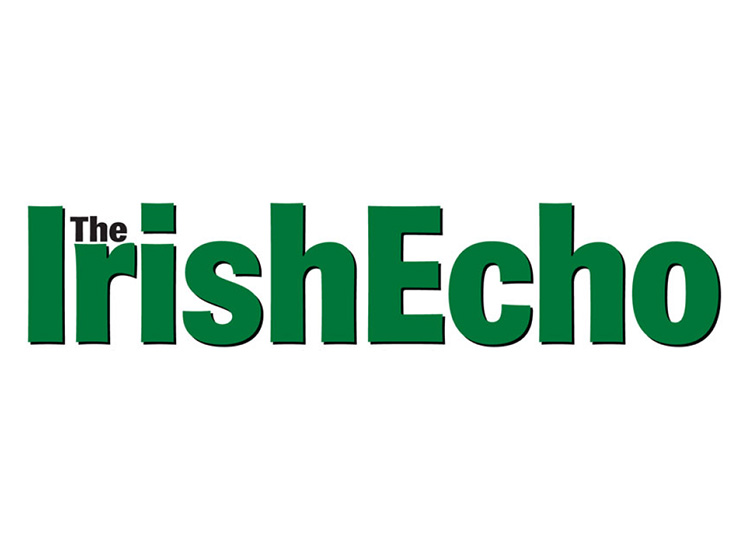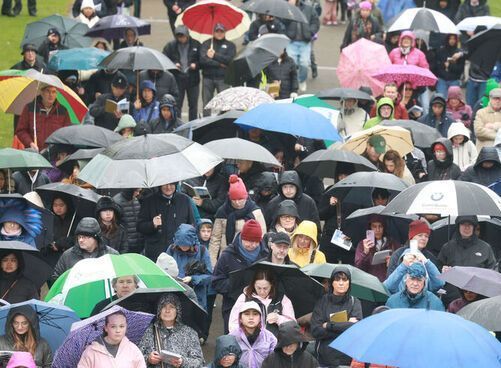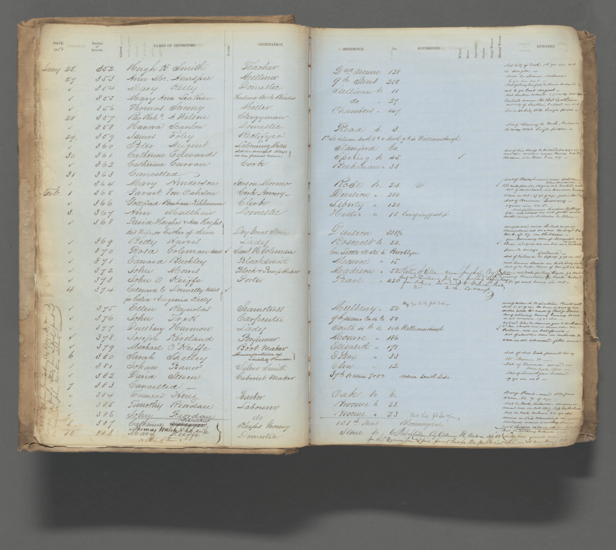A view of the interior of the Long Hall on East 34th Street in Manhattan. PHOTOS BY PETER MCDERMOTT
By Peter McDermott
The Long Hall is a name to reckon with for any connoisseur of the Irish pub.
But the New York version is paying homage to, not imitating, the original on George’s Street in Dublin, which is known for its Victorian grandeur and scale.
Jonathan Kennedy and his two co-founders have drawn on a range of other inspirations at 58 East 34th St., and blended them, much like the teas on display behind the counter are said to have been.
“The holy grail for any Irish New York bar should be to be the nearest thing to a pub back home,” said Kennedy, who is from Rathcoole, Co. Dublin. “People are fascinated by the Irish pub.”
And too often when Americans visit a pub in Ireland they believe, not unreasonably, that what they’d experienced back in New York or Boston or Chicago wasn’t the real thing. That’s because while Irish bars proudly wear the label they don’t do enough to make the establishment authentic.
“The whole feel is different,” Kennedy said about Irish bars back home.
It’s not that he doesn’t believe there aren’t honorable exceptions in New York. There are — Ulysses on Stone Street is one. And it’s not as if he hasn’t been deeply involved in the city’s Irish bar industry or that he doesn’t find it a mutually supportive network. He has and he does.
Kennedy worked in Annie Moore’s beside Grand Central Terminal for seven years, while one co-owner, Sligo native Cathal Clarke, was also a veteran of Midtown bar work. The other, Gerry McEntee, who is from Monaghan Town, was employed mostly in the construction industry.
One inspiration for their pub is the beautifully produced 2008 coffee-table book “The Irish Pub,” by travel writer Turtle Bunbury (a past contributor to the Irish Echo) and photographer James Fennell.

Bottles of Jameson must vie for attention with Tayto Crisps and Barry’s Tea.
Kennedy took down the volume to show something that caught his eye from a pub in Bunbury’s own County Carlow — M. O’Shea in Borris — and led to a design in New York’s the Long Hall.
His method is to take the traditions seriously, but not in any fundamentalist way. Even the wood comes from pews in mainline churches, three of them.
It was bought from Big Reuse (once known as BuilditGreen!NYC) in Brooklyn.
“Wood stands the test of time,” Kennedy said. Then, he pointed admiringly to an effect that involved “painstaking work.”
The Dubliner also loves the 2013 documentary “The Irish Pub,” which covers some of the same territory as the book. (It has been available on live-streaming on Netflix, but is not currently). No doubt, the Long Hall aims to be less claustrophobic, lonely and spooky than some of the rural establishments are or seem in the film. Though, to be fair, one of the Dublin pubs featured — Kavanagh’s, aka the Gravediggers — is embedded in the wall of the city’s most famous cemetery, Glasnevin, and has a ghost story or two attached to it.

The view towards the front door from the bar.
The Long Hall wouldn’t be eligible for “The Irish Pub” the film because, as Kennedy pointed out, each bar profiled is a family business that’s been passed on from generation to generation. He, Clarke and McEntee are only related through bonds of friendship and their business partnership.
And in any case, they’re in New York, with a pub that’s not quite literally under the shadow of the Empire State Building, but is close, at a block and a half away.
Bunbury wrote about M.J. Byrne, in Greenane, Co. Wicklow: “The building probably dates to the 17th century and was almost certainly a shebeen for travelers crossing the mountain pass between Aughrim and Dublin.”
The travelers who make their way to the Long Hall could be from anywhere, but the pub is notably popular with people from Dublin GAA circles, while rugby fans and golf enthusiasts tend to feel very much at home there, too. Of course, soccer is also a big part of things: during the summer’s World Cup, for instance, some companies rented out the back part of the bar for England’s games. Those companies tend to be involved in construction and come back again and again.
Meantime, members of both the Barry’s and Lyons factions can find what they love most in life for sale behind the bar. Here, the pub with a definite urban vibe makes a nod in the direction of a more rural tradition. And it does pretty good business with it.
In Ireland, some of the old villages are now by-passed by motorways. In his text of a decade ago, Bunbury referred to another issue — tough drink-driving laws that made punters wary of traveling a mile or two to their local. The problem could be said for the exact opposite for the Long Hall. Potential customers are very close, but don’t know about the joys of spending time at the new 58 East 34th St. Actually, Kennedy & friends have been there since 2015. However, the previous occupant did the space and the block no favors. It was a dive bar and not in a good way.

“It didn’t have a great reputation,” Kennedy said. The problem is that groups of young office workers who drink or eat together only occasionally will have long memories about a bar. He heard the phrase “no, it’s a different place” more than once in the early days and he hates to think there are still people around the corner that don’t know there’s a great bar on 34th Street.
The support of Irish bar-owners — of Rory Dolan’s, Ulysses and a list of others — is one of the great upsides.
“In your first few months you’re very nervous and you have bar owners saying ‘if you ever need anything, here’s my number.’ It’s pretty comforting,” Kennedy said.
The help can come with the little things, but also the bigger ones — like playing a role in putting together a well-trained kitchen staff.
The end result is that Kennedy has heard what is music to an Irish bar-owner’s ears: “Oh my God, the food is so good!”










